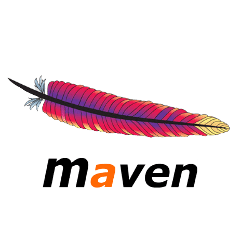The Maven dependency ‘scope‘ attribute is used to specify the visibility of a dependency, relative to the different lifecycle phases (build, test, runtime, etc). Each scope indicates how a dependency is handled, when it is included in the classpath, and which dependencies are inherited by child projects.
Maven provides six scopes:
| Scope | Description | Classpath Inclusion | When to Use |
|---|---|---|---|
compile | Default scope. Available in all classpaths (compilation, testing, runtime). | Included in all classpaths | For dependencies required for both compilation and runtime. |
provided | Similar to compile, but expected to be provided by the JDK or container at runtime (e.g., servlet API). | Compile, test | For dependencies provided by the runtime environment (e.g., web containers). |
runtime | Required during execution but not for compilation (e.g., JDBC drivers). | Test, runtime | For dependencies needed at runtime but not at compile time. |
test | Only available in the test classpath, not required for runtime or compile. | Test | For dependencies needed solely for testing (e.g., JUnit, Mockito). |
system | Similar to provided, but you must explicitly provide the JAR file with a local path. | Compile, test | For dependencies not available in any repository and must be manually provided. |
import | Only available in dependencyManagement section to import dependency from another BOM (Bill of Materials). | N/A | For managing versions of dependencies across multiple projects. |
1. Maven ‘Compile‘ Scope
This is Maven’s default scope. Dependencies with compile scope are needed to build, test, and run the project. Dependencies with compile scope are included during compile, test, and runtime phases.
Scope compile is to be required in most cases to resolve the import statements into your Java class’s source code.
<dependencies>
<dependency>
<groupId>log4j</groupId>
<artifactId>log4j</artifactId>
<version>${log4j-version}</version>
<!-- You can ommit this because it is default -->
<scope>compile</scope>
</dependency>
</dependencies>2. Maven ‘Provided‘ Scope
The Maven dependency scope ‘provided‘ is used during the build and test of the project. These dependencies are also required to run, but should not exported, because the dependency will be provided by the runtime, for instance, by a servlet container or application server.
<dependency>
<groupId>javax.servlet</groupId>
<artifactId>servlet-api</artifactId>
<version>3.0.1</version>
<scope>provided</scope>
</dependency>3. Maven ‘Runtime‘ Scope
Dependencies with maven dependency scope ‘runtime‘ are not needed to build, but are part of the classpath to test and run the project.
<dependency>
<groupId>com.thoughtworks.xstream</groupId>
<artifactId>xstream</artifactId>
<version>1.4.4</version>
<scope>runtime</scope>
</dependency>4. Maven ‘Test‘ Scope
Dependencies with maven dependency scope test are not needed to build and run the project. They are needed to compile and run the unit tests.
<dependency>
<groupId>junit</groupId>
<artifactId>junit</artifactId>
<version>4.12</version>
<scope>test</scope>
</dependency>5. Maven ‘System‘ Scope
Dependencies with system scope are similar to ones with scope provided. The only difference is system dependencies are not retrieved from the remote repository. They are present under the project’s subdirectory and are referred from there. See external dependency for more details.
<dependency>
<groupId>extDependency</groupId>
<artifactId>extDependency</artifactId>
<scope>system</scope>
<version>1.0</version>
<systemPath>${basedir}\war\WEB-INF\lib\extDependency.jar</systemPath>
</dependency>6. Maven ‘Import‘ Scope
The import scope is only supported on a dependency of type pom in the ‘dependencyManagement‘ section. It indicates the dependency to be replaced with the effective list of dependencies in the specified POM’s dependencyManagement section.
<dependencyManagement>
<dependencies>
<dependency>
<groupId>other.pom.group.id</groupId>
<artifactId>other-pom-artifact-id</artifactId>
<version>SNAPSHOT</version>
<scope>import</scope>
<type>pom</type>
</dependency>
</dependencies>
</dependencyManagement>7. Transitivity Resolution
When you include a maven dependency and it has its other dependencies (i.e. transitive dependencies) then you may want to be clear about the scope of these transitive dependencies as well.
Let’s understand maven transitive dependencies with a simple table. In this table, if a dependency is set to the scope in the left column, transitive dependencies at the top row will result in a dependency with the scope listed at their intersection.
| Dependency | compile | provided | runtime | test |
|---|---|---|---|---|
| compile | compile | – | runtime | – |
| provided | provided | – | provided | – |
| runtime | runtime | – | runtime | – |
| test | test | – | test | – |
8. Summary
Understanding and using the correct Maven dependency scope ensures that the correct project dependencies are included in the correct phases of the build lifecycle. This helps in managing the classpath efficiently and avoiding issues related to missing or redundant dependencies.
Drop me your questions in the comments section.
Happy Learning!!


Comments